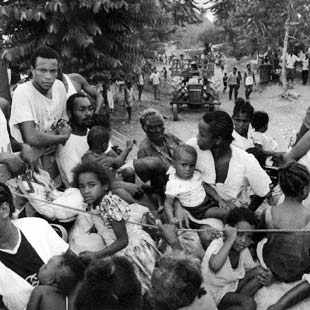 Hello All~
Hello All~This entry by no measure is meant to count as "my" blog entry. However I wanted to alert all of you to the actions developing on campus in the next couple of days relating to events in Burma. The following messages are from my friend, Emma. She left Burma with her family several years ago again is now mobilizing the Georgetown community to respond to recent events in the region.
9/25
"Please show your support for the monks and people of the military-run country of Burma this Friday in a very simple way:
WEAR A RED TOP THIS FRIDAY!!!!
PLEASE LET AS MANY PEOPLE AS YOU CAN KNOW ABOUT THIS!!!!!!"
"Reaching a degree of fervor and boldness that hasn't been seen for nearly 20 years, the people of Burma are SERIOUS in their desire be freed from military rule. They are holding PEACEFUL protests, forming protective chains around tens of thousands of Buddhist monks marching through Rangoon and Mandalay chanting for democracy and dialogue.
HOWEVER, a military crackdown may unfortunately be imminent, they have imposed a CURFEW, forbidden the RIGHT TO ASSEMBLE, and are reportedly ordering monks' robes in order to incite violence within the protesters (so they'll have an excuse to use violence).
Help us keep the world's attention on Burma and the actions of the military!!! The more people who know about the events of the country, the better. Please take the time to PUT ON A RED TOP THIS FRIDAY, and tell anybody you know about it. PLEASE INVITE PEOPLE TO THIS EVENT, we need your help!!!"
A summary of events is here, and a petition requesting the UN to take action is here. Further news can be found at The Irrawaddy.










 After marching from the White House to the Capitol Building, protesters can either attend a legal rally near the Capitol or participate in a
After marching from the White House to the Capitol Building, protesters can either attend a legal rally near the Capitol or participate in a 
